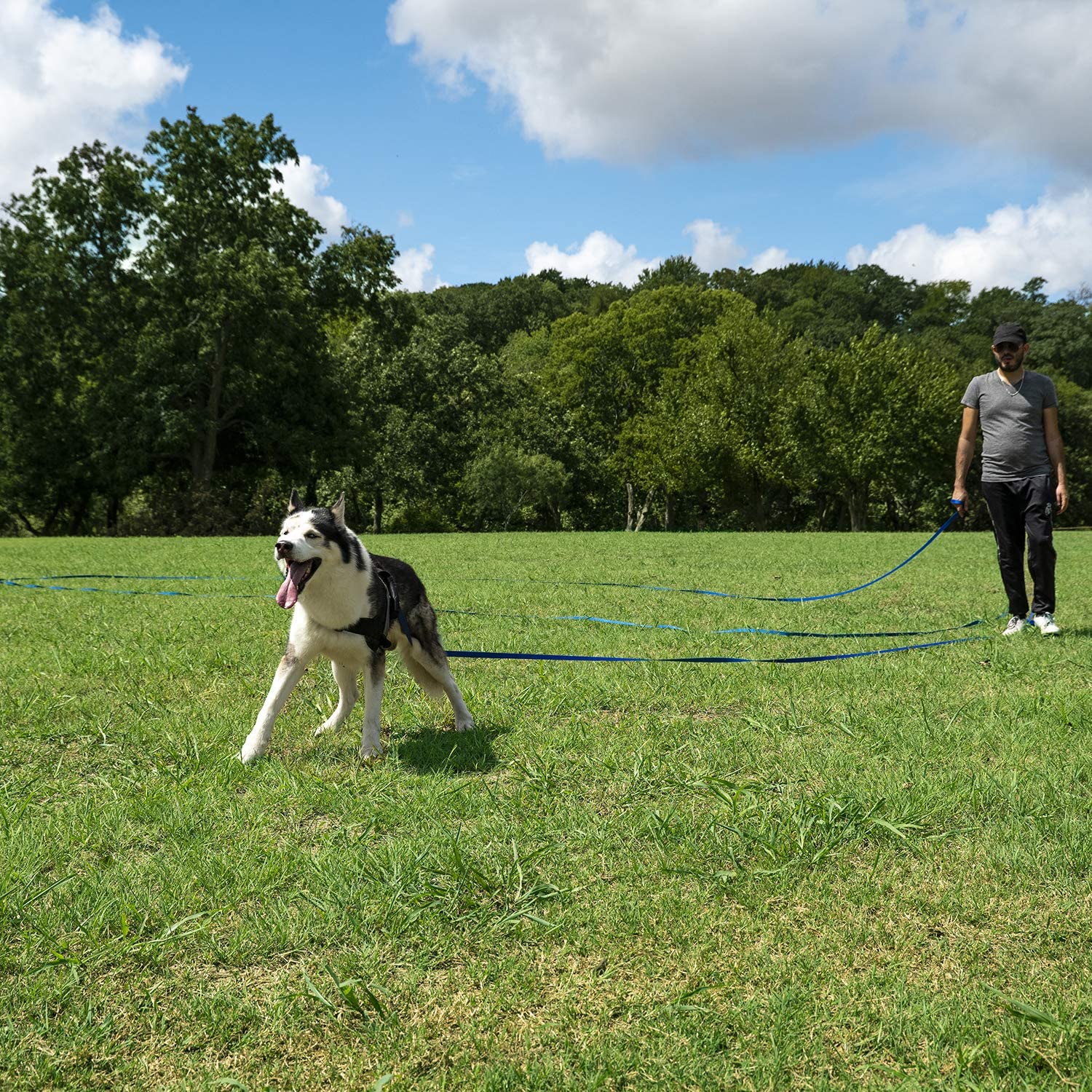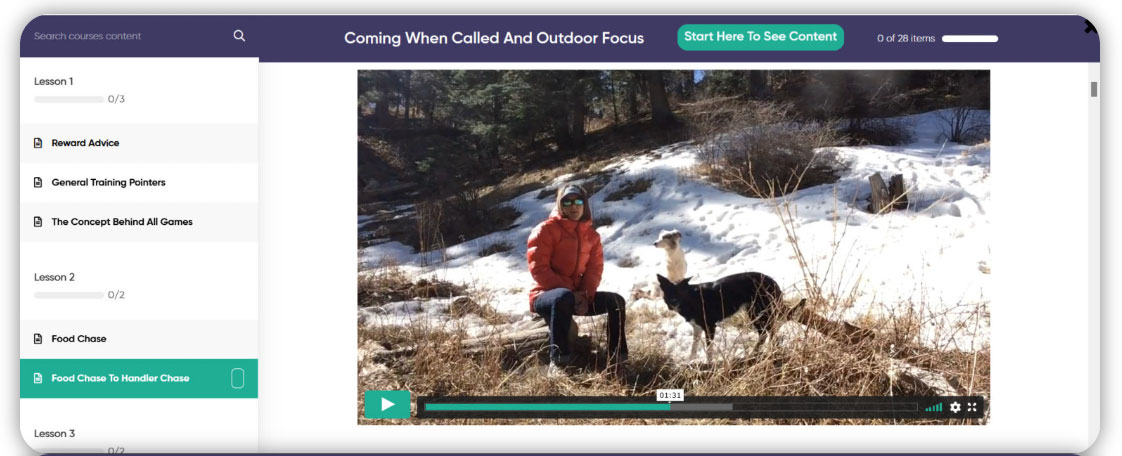
Papillons are small, energetic dogs that love to play and explore. As a pet parent, you want your furry friend to be safe and come back to you when called. However, training your papillon to come when called can be a challenging task, as they can be easily distracted by their surroundings.
In this article, we’ll explore some tips and tricks for training your papillon to come when called, including building a strong bond with your dog, using positive reinforcement techniques, and creating a consistent training routine. With patience and persistence, you can teach your papillon to come when called and enjoy a stronger, more rewarding relationship with your furry companion.
Note: For a complete training, we highly recommend this SpiritDog Online Training Course “Coming When Called”.
1. Start with a Strong Foundation
Before you begin training your papillon to come when called, it’s crucial to establish a strong bond with your pet. Spend time playing with your dog, engaging in activities they enjoy, and providing positive reinforcement through praise and treats. Building trust and a strong connection with your papillon will make them more likely to respond positively to your commands.
2. Choose a Distinct Command Word
Select a specific word or phrase for the recall command, such as “come” or “here.” Ensure that the command is distinct from other commands you use and that all family members use the same word consistently. Consistency is critical to avoid confusing your papillon and ensuring that they understand what you expect from them.
3. Begin Training Your Papillon in a Controlled Environment
Start training your papillon to come when called in a controlled, distraction-free environment like your home or a fenced yard. In the early stages of training, it’s essential to minimize distractions to help your dog focus on learning the new command. As your dog becomes more reliable in responding to the recall command, gradually introduce distractions and practice in various environments.
4. Use Positive Reinforcement with Your Papillon
When training your papillon to come when called, always use positive reinforcement techniques. Reward your pup with praise, treats, or playtime when they respond to your recall command. This will help create a positive association with the command and motivate your dog to respond consistently. Remember to be patient and consistent in your training, as it may take time for your dog to master the recall command.
If you’re using treats, these are currently the most popular training treats on Amazon.
5. Gradually Increase Distance and Distractions
As your papillon becomes more reliable in responding to the recall command in a controlled environment, begin to increase the distance between you and your dog during training sessions. Practice calling your dog from various distances and gradually introduce distractions, such as other dogs, people, or toys. This will help your dog learn to respond to the command even in challenging situations.
Related: Looking for the fastest way to train your papillon to come when called? Try this video course.
6. Make Yourself Interesting and Rewarding to Your Papillon
To encourage your papillon to come when called, make yourself more appealing and rewarding to your dog. Use an enthusiastic, high-pitched voice when calling your dog, and reward them with a treat or praise when they respond. You can also try running away from your dog when calling them, as this can entice your dog to chase after you and respond to the recall command.
7. Never Punish Your Papillon for Coming When Called
It’s essential to avoid punishing your papillon if they do not immediately respond to the recall command or if they come to you slowly. Punishing your dog can create a negative association with the command and make them less likely to respond in the future. Instead, be patient and continue to practice and reinforce the command using positive reinforcement techniques.
8. Practice the Recall Command Regularly with Your Papillon
Consistent practice is crucial for training your papillon to come when called. Incorporate recall training into your dog’s daily routine, and practice the command in various environments and situations. This will help reinforce the behavior and make it more reliable over time.
9. Use a Long Training Leash on Your Papillon
When transitioning from a controlled environment to a more open space, consider using a long training leash to maintain control over your papillon while they learn to respond to the recall command. This will help you avoid losing control of your dog and provide a safety measure as you gradually increase the distance and distractions during training sessions.
This is the most popular long training leash on Amazon.
10. Be Patient and Persistent with Your Papillon
Training your papillon to come when called takes time, patience, and persistence. Some dogs may learn the command quickly, while others may require more time and consistent practice. Be patient with your dog and maintain a positive attitude during training sessions. Remember that every dog is unique, and the key to success is consistent practice and positive reinforcement.
11. Use a Professional Online Papillon Training Course
While this article provides many helpful tips for training your papillon, you can increase your chances of success by enlisting the help of a professional online dog trainer. We love the SpiritDog online courses, since its includes unlimited questions with a real dog trainer.
You can check out their Teach Your Papillon to Come Online Course Here
In conclusion, training your papillon to come when called is an essential skill that can keep them safe and strengthen your bond with them. By using positive reinforcement techniques, creating a consistent training routine, and building a strong bond with your furry friend, you can make the training process enjoyable and effective. Remember to be patient and persistent, and avoid punishing your dog for not coming when called. Instead, reward them for responding to your command and gradually increase the level of difficulty in your training sessions. With time and practice, your papillon will become a reliable companion who will always come back to you when called.
More Frequently Asked Questions For Training Your Papillon
1. How do I stop my papillon from barking excessively?
Papillons are known to be vocal dogs and may bark excessively, especially when they are excited or anxious. However, excessive barking can be a nuisance to you and your neighbors. Here are some tips to help you stop your papillon from barking excessively:
- Identify the trigger: The first step in stopping your papillon from barking excessively is to identify the trigger. Does your dog bark when they see other dogs or people? Do they bark when left alone? Understanding the reason behind your papillon’s barking will help you address the problem effectively.
- Socialize your papillon: Papillons that are well-socialized are less likely to bark excessively. Introduce your papillon to other dogs and people in a controlled environment to help them feel more comfortable and less anxious.
- Provide mental stimulation: Boredom can also cause excessive barking. Provide your papillon with plenty of mental stimulation through interactive toys, puzzle feeders, and obedience training.
- Use positive reinforcement: Reward your papillon when they stop barking on command. Use treats or verbal praise to reinforce the desired behavior.
- Seek professional help: If your papillon’s excessive barking persists, seek help from a professional dog trainer or behaviorist. They can help you identify the root cause of the problem and provide effective solutions.
2. How can I teach my papillon to walk on a leash?
Teaching your papillon to walk on a leash can be a challenging task, but with patience and consistency, it can be achieved. Here are some steps to follow when training your papillon to walk on a leash:
- Introduce the leash: Start by introducing your papillon to the leash in a calm and controlled environment. Allow them to sniff and explore the leash before attaching it to their collar.
- Reward good behavior: Reward your papillon with treats or verbal praise when they remain calm and relaxed while wearing the leash.
- Start indoors: Begin training your papillon to walk on a leash indoors, where there are fewer distractions. Use a short leash to prevent them from wandering too far.
- Practice walking: Once your papillon is comfortable wearing the leash, start practicing walking indoors. Use positive reinforcement to reward them for walking calmly and staying by your side.
- Gradually increase the difficulty: Once your papillon is comfortable walking indoors, start practicing outdoors where there are more distractions. Increase the length of the leash gradually and continue to use positive reinforcement to encourage good behavior.
- Be patient: Training your papillon to walk on a leash takes time and patience. Be consistent with your training and reward good behavior to make the process more enjoyable for your furry friend.
3. How can I stop my papillon from jumping on people?
Papillons are energetic dogs that love to greet people, but their jumping behavior can be a problem. Here are some tips to help you stop your papillon from jumping on people:
- Ignore the behavior: When your papillon jumps on you or other people, turn your back and ignore them. This will teach them that jumping is not an effective way to get attention.
- Reward good behavior: When your papillon remains calm and doesn’t jump, reward them with treats or verbal praise.
- Train an alternative behavior: Teach your papillon an alternative behavior, such as sitting or shaking hands, that they can do when they meet people.
- Use a leash: Use a leash to control your papillon’s behavior when you are introducing them to new people or situations.
- Socialize your papillon:
4. What’s the best online course for teaching a papillon to come when called? At iHeartDogs, we recommend the SpiritDog online course “Coming When Called.” The course includes unlimited questions with a real dog trainer.
iHeartDogs is reader supported. Our articles contain affiliate links where we are paid a small commission for linking to a product at no additional cost to the reader.



 Toledo, United States.
Toledo, United States.